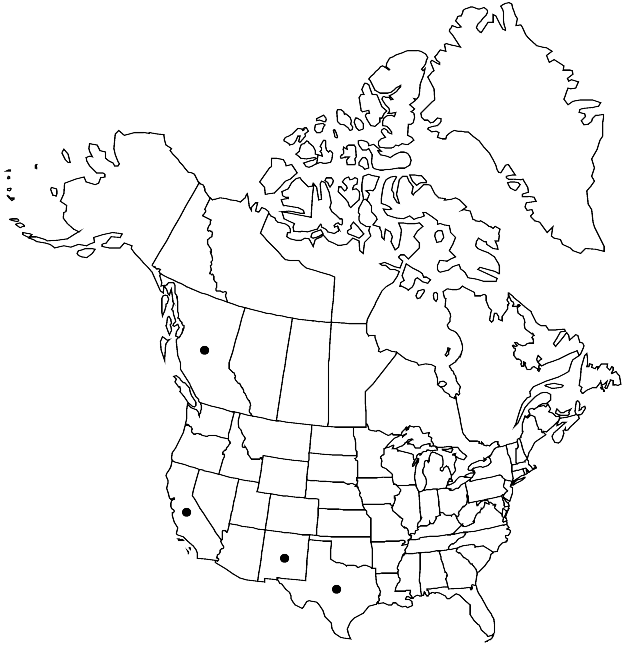Bartramia stricta
Muscol. Recent. 2(3): 132, plate 1, fig. 5. 1803.
Plants in dense tufts, glaucous to brownish green. Stems 1–3 cm. Leaves stiffly erect-appressed when dry, erect-spreading when moist, narrowly lanceolate, 2.5–4 mm; base not sheathing, shoulders absent; margins recurved from near base to distal acumen, serrulate distally, teeth single; apex narrowly aristate; costa excurrent, abaxially prominent, distal abaxial surface rough; basal laminal cell-walls thin; medial and distal cells 12–20 × 4–6 µm, prorulae low. Sexual condition synoicous. Seta 0.1–1.5 cm, straight. Capsule erect, subglobose to ovoid, symmetric, 1.4–2 mm; operculum conic convex; peristome single; exostome teeth 250–300 µm, striolate papillose proximally, smooth distally; endostome absent. Spores 22–26 µm.
Phenology: Capsules mature Jan–Aug.
Habitat: Soil, rock
Elevation: low to high elevations (10-2300 m)
Distribution

B.C., Calif., N.Mex., Tex., Europe, sw Asia (Syria), sw Asia (Turkey), n, c Africa, Australia
Discussion
Bartramia stricta is a widespread Old World species occurring infrequently in the southwestern portion of the flora area, with an isolated occurrence in western Canada. The strict, appressed leaves without shoulders and with relatively uniform areolation from base to acumen aid in recognition. When fertile, the erect, symmetric capsules and single but well-developed peristome are diagnostic. Confusion between this species and Anacolia laevisphaera may occur, especially with sterile material. In the latter, the apices of the distal leaves are often divergent when dry, spreading recurved when moist, with the inner basal laminal cells more differentiated than those of the basal angles compared with basal areolation in B. stricta.
Selected References
None.
